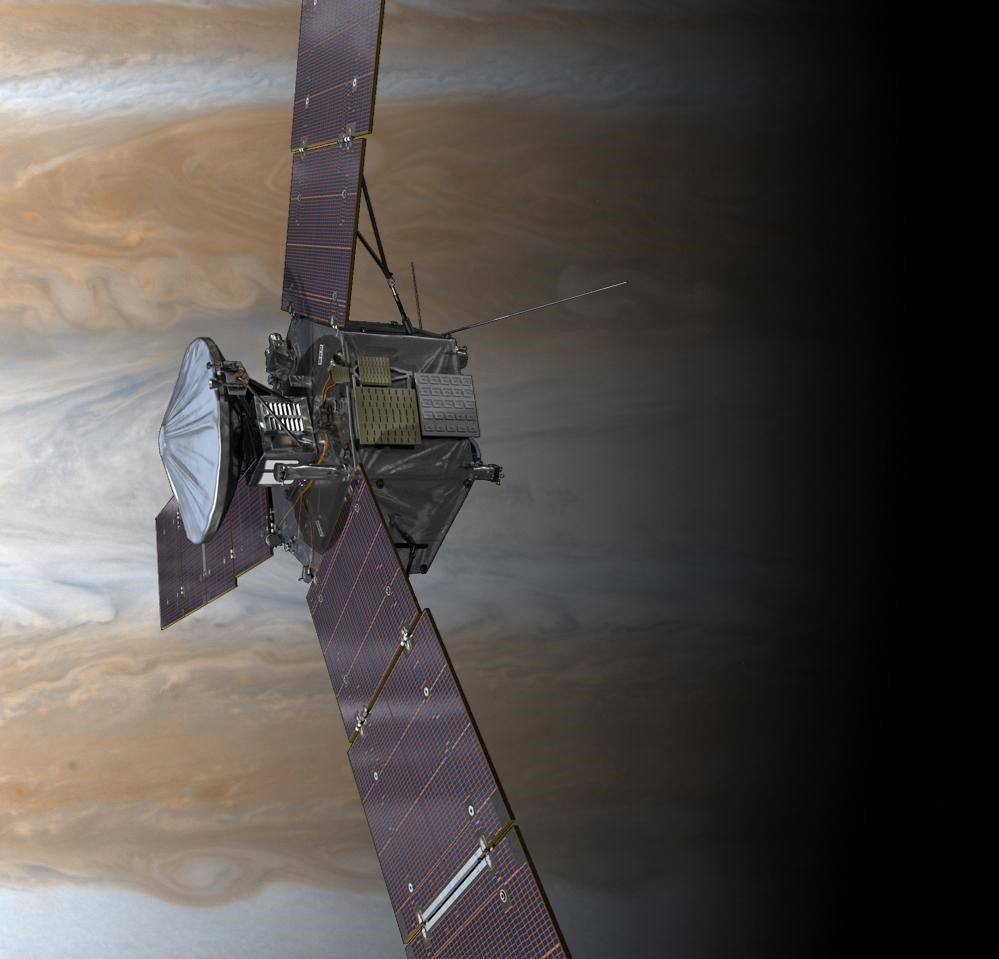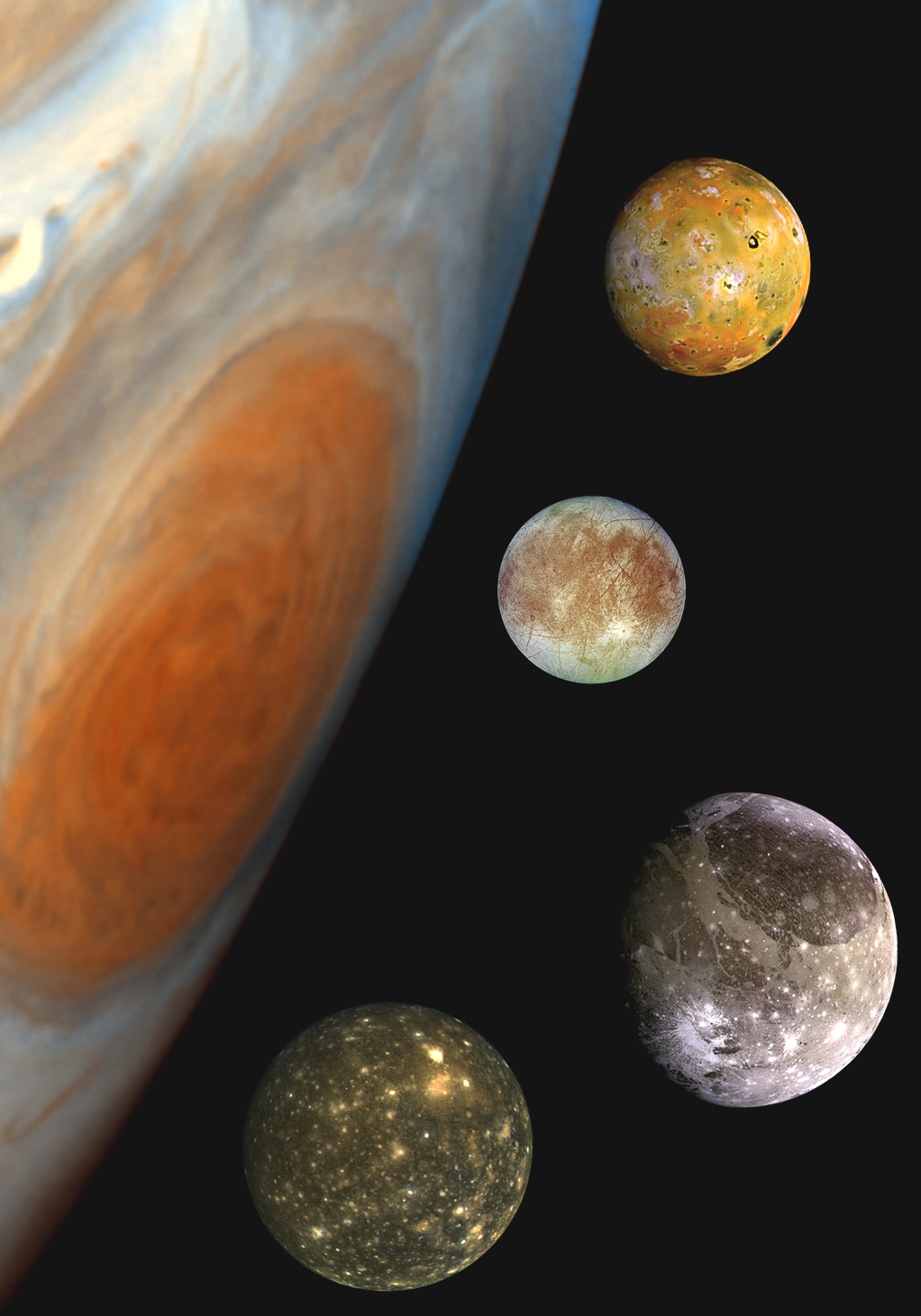Target: Jupiter — Missions to the Solar System's Largest Planet

NASA is launching its most advanced probe yet to study the planet Jupiter on Friday (Aug. 5). But the new mission, called Juno, is standing on the shoulders of giants, its managers said — specifically the eight robotic spacecraft that visited the gas giant planet previously.
"Each of the missions that we do are providing unique and very important information," said Juno's principal investigator, Scott Bolton, of the Southwest Research Institute in San Antonio, during a press conference Wednesday (Aug. 3). "Some of those earlier missions were reconnaissance, so we could figure out what are the right questions, and they essentially led us to ask the questions that we have with Juno." [Photos: NASA's Juno Mission to Jupiter]
Here's a rundown of all the manmade objects sent to visit Jupiter so far:
Pioneer 10
The first spacecraft ever to make it as far as Jupiter was NASA's Pioneer 10 probe, launched in March 1972 on a mission to study the asteroid belt, the atmosphere of Jupiter and the outer solar system. About a year-and-a-half later, in December 1973, Pioneer 10 encountered Jupiter.
The craft flew within 124,000 miles (200,000 kilometers) of the tops of the clouds covering the gas giant. It made a number of revelations about the gas giant, including measurements of the intense radiation in the environment of Jupiter.
Pioneer 10 is currently on a trajectory to leave the solar system, traveling toward the outskirts of the Milky Way in the direction of the star Aldebaran. Communication with the spacecraft was lost in 2003.
Breaking space news, the latest updates on rocket launches, skywatching events and more!
Pioneer 11
A sister ship to its predecessor, Pioneer 11 was launched in April 1973. This craft became the second to fly through the asteroid belt and passed Jupiter in December 1974. Pioneer 11 went on to become the first spacecraft to encounter Saturn in July 1979.
This probe captured detailed images of the Jovian Great Red Spot, as well as the planet's poles, and measured the mass of Jupiter's moon Callisto.
Humans lost the ability to communicate with Pioneer 11 in 1995, but the probe is still traveling toward the center of the galaxy in the direction of the constellation Scutum.
Voyager 1
Launched in September 1977, Voyager 1 flew by Jupiter in March 1979, taking more than 18,000 images of the gas giant and its satellites. The vehicle made its closest approach at a distance of about 217,000 miles (349,000 kilometers) of the planet's center.
Among Voyager's discoveries was the presence of volcanic activity on Jupiter's moon Io.
Voyager 1 is now on its way out of the solar system and is currently the most distant manmade object from Earth, at about 69 times the distance from the sun to our own planet.
Voyager 2
Voyager 2 was launched in August 1977, before its twin spacecraft Voyager 1, but actually reached Jupiter later, in April 1979. It took just as many detailed photos of the Jovian system as its sibling, and helped discover three new moons as well as a small ring around Jupiter.
The probe is still operating on an extended mission to study the boundary between the solar system and interstellar space. [5 Facts About NASA's Voyager Spacecraft]
Galileo
Galileo was the first mission sent to orbit Jupiter. The vehicle launched in October 1989 and arrived in orbit around the planet in December 1995. While in orbit, Galileo dropped a probe down to the surface that measured the temperature, wind speeds and pressure of Jupiter's atmosphere as it descended.
Galileo's mission was extended to study Jupiter's moons Io, Europa, Ganymede, and Callisto, and it revealed a trove of secrets about these satellites, including the presence of a salty ocean under Europa's surface and an iron core and magnetic field on Ganymede.
Galileo studied Jupiter until 2003, when it was decommissioned and sent on a suicide mission to crash into Jupiter's surface in order to avoid contaminating any of the Jovian moons with bacteria from Earth.
Ulysses
Ulysses, launched in October 1990 as a joint venture of NASA and the European Space Agency (ESA), flew by Jupiter in February 1992 as part of a roundabout way of getting to the poles of the sun. Jupiter's gravity was used as a slingshot to send the probe back toward the center of the solar system into a solar polar orbit.
However, the flyby was enough for Ulysses to gather some helpful measurements of Jupiter's intense magnetic and radiation field. Ulysses' mission ended in June 2009. [Video: Key to Solar System's Origins Locked Inside Jupiter]
Cassini-Huygens
The Cassini-Huygens probe (a NASA-ESA-Italian Space Agency mission) is best known for its ongoing study of Saturn, which the spacecraft entered orbit around in 2004. But on its way to the ringed planet, Cassini passed by Jupiter in December 2000, three years after its launch in October 1997.
The probe's high-resolution cameras caught 26,000 dazzling images of the Jovian atmosphere during its months-long flyby. These photos helped scientists revise their understanding of the red and white bands of gas around the planet.
The Huygens probe dropped into Saturn's moon Titan in 2005, and the Cassini probe is still orbiting Saturn.
New Horizons
The most recent mission to visit Jupiter was New Horizons, a NASA probe bound for the dwarf planet Pluto that launched in January 2006. New Horizons flew by Jupiter between January and May 2007.
The Jupiter visit was in fact an essential part of New Horizons' mission, as the giant planet's gravity provided a once-in-a-lifetime opportunity to slingshot a craft on toward Pluto. During the five-month flyby, New Horizons refined calculations of the orbits of Jupiter's inner moons, and took the first spacecraft photos of the planet's Little Red Spot.
Juno
NASA's Juno mission will be only the second spacecraft dedicated to studying the solar system's largest planet. The probe is scheduled to launch Aug. 5 and arrive in polar orbit around Jupiter in August 2016.
The mission will build on all those that have gone before, hopefully helping scientists fill in the gaps in their understanding of Jupiter's formation and evolution, as well as the history of the solar system in general.
The spacecraft is outfitted with instruments to study in detail the gas giant's atmosphere, magnetosphere and gravitational field. Scientists will investigate the auroras that rage on Jupiter's poles, and construct a 3-D map of the planet's full environment.
You can follow SPACE.com senior writer Clara Moskowitz on Twitter @ClaraMoskowitz. Follow SPACE.com for the latest in space science and exploration news on Twitter @Spacedotcom and on Facebook.

Clara Moskowitz is a science and space writer who joined the Space.com team in 2008 and served as Assistant Managing Editor from 2011 to 2013. Clara has a bachelor's degree in astronomy and physics from Wesleyan University, and a graduate certificate in science writing from the University of California, Santa Cruz. She covers everything from astronomy to human spaceflight and once aced a NASTAR suborbital spaceflight training program for space missions. Clara is currently Associate Editor of Scientific American. To see her latest project is, follow Clara on Twitter.



